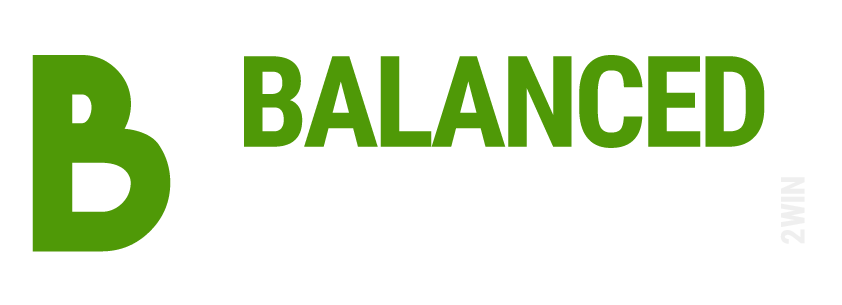
Strategy & the Balanced Scorecard – A Critical Link
Article Highlights
- The study of business strategy, while relatively new, has produced thousands of works over the past several decades.
- Many schools of thought exist relating to the formulation of strategy.
- While strategy development is vital, true success is entirely dependent upon the successful execution of strategy.
- The Balanced Scorecard is a proven tool for describing and executing strategy.
Strategy
The field of strategy is undoubtedly the most chronicled subject in the world of business. What’s amazing is that the disciplined study of business strategy has really only been with us for a few decades, but in that time has spawned literally thousands of works. An additional challenge to discussing strategy is the fact that it has relevant connections with numerous other areas of study. Who among us doesn’t know at least one person proudly displaying a copy of “The Art of War” in their office? Of course, military strategy has been with us for thousands of years, but historians, physicists, biologists, psychologists, and anthropologists, to name but a few, have also made significant contributions to the field of strategy.
From the huge mountain of information that exists we must distill what is most critical to the discussion at hand. Developing a comprehensive strategy for your organization is beyond the scope of my books. Many well written and cogent texts are available on the subject. In this article I will focus on a review of the common elements of strategy, and most importantly for us, will outline why strategy and the Balanced Scorecard must be woven together to get the maximum benefit from both.
What is Strategy?
A prolific writer on the subject of strategy, Henry Mintzberg, provides this excellent synopsis of the subject to begin our discussion.
“My research and that of many others demonstrates that strategy making is an immensely complex process, which involves the most sophisticated, subtle, and, at times, subconscious elements of human thinking.”
As this quote illustrates, the difficulty with defining strategy is that it holds different meanings to different people and organizations. Some feel strategy is represented by the high-level plans management devises to lead the organization into the future. Others would argue strategy rests on the specific and detailed actions you’ll take to achieve your desired future. To others still, strategy is tantamount to best practices. Finally, some may consider strategy a pattern of consistency of action over time. Rather than focus on a stifling definition of this nebulous term, let’s look at some of the key principles of strategy:
- Different activities: Strategy is about choosing a different set of activities than your rivals the pursuit of which leads to a unique and valuable position in the market.
If everyone were to pursue the same activities, then differentiation would be based purely on operational effectiveness. In their excellent book, I think it offers the freshest thinking on strategy to be produced in years, “Blue Ocean Strategy” authors Kim and Mauborgne distill the essence of successful strategy to three elements: focus, divergence, and a compelling tagline. Focusing on key strengths, differentiating yourself from competitors on typical industry dimensions, and offering a memorable tagline. - Trade-Offs: Effective strategies demand trade-offs in competition. Strategy is more about the choice of what not to do than what to do. Organizations cannot compete effectively by attempting to be everything to everybody. The entire organization must be aligned around what you choose to do and create value from that strategic position.
- Fit: The activities chosen must fit one another for sustainable success. Peter Drucker in his “Theory of the business,” suggests our assumptions about the business must fit one another to produce a valid theory. Activities are the same, they must produce an integrated whole.
- Continuity: While major structural changes in the industry could lead to a change in strategies, generally they should not be constantly re-invented. The strategy crystallizes your thinking on basic issues such as how you will offer customer value, and to what customers. This direction needs to be clear to both internal (employees) and external (customers) constituents.Changes may bring about new opportunities which can be assimilated into the current strategy – new technologies for example.Various thought processes: Strategy involves conceptual as well as analytical exercises.As the Mintzberg quote at the outset of this section reminds us, strategy involves not only the detailed analysis of complex data, but also broad conceptual knowledge of the company, industry, market, etc. Using the elements discussed above as ingredients, an organization could literally cook up innumerable types of strategies, and over the years they have. In their book, “Strategy Safari,” authors Ahlstrand, Lampel, and Mintzberg offer ten schools of strategic thought which have emerged in the ongoing practice of management.
Strategy and the Balanced Scorecard – A Critical Link
I recently read an article discussing the execution of strategy in organizations. The article began this way:
“Take this quick quiz. Question #1: three frogs are sitting on a log. One decides to jump off. How many are left? You might think two, but the answer is three. One has decided to jump off.”
“Question #2: three companies have poor earnings. One decides to revitalize key product lines, strengthen distribution channels, and become customer intimate. How many companies have poor earnings? You get the idea: deciding and doing are two different things.”
Although some organizations question the value of strategy in an era characterized by hyper change, the vast majority consider strategy a mandatory component of success. The problem is not one of developing a strategy – numerous options are available for that task as we saw in the previous section. The fundamental issue is one of implementation, translating the strategy into terms that everyone understands and thereby bringing focus to their day to day actions. Statistics suggest that seventy percent of CEO failures are not the result of poor strategy, but poor execution.
The Balanced Scorecard provides the framework for an organization to move from deciding to live their strategy to doing it. The Scorecard describes the strategy, breaking it down into its component parts through the objectives and measures chosen in each of the four perspectives. The Balanced Scorecard is ideally created through a shared understanding and translation of the organization’s strategy into objectives, measures, targets, and initiatives in each of the four Scorecard perspectives. The translation of vision and strategy forces the executive team to specifically determine what is meant by sometimes imprecise terms contained in the strategy, for example: “world class,” “top-tier service” and “targeted customers.” Through the process of developing the Scorecard an executive group may determine “world class” translates to means zero manufacturing defects. All employees can now focus their energies and day-today activities toward the crystal-clear goal of zero defects rather than wondering about, and debating the definition of “world class.” Using the Balanced Scorecard as a framework for translating the strategy these organizations create a new language of measurement that serves to guide all employees’ actions toward the achievement of the stated direction.
A key attribute of strategy formation is performing a different set of activities than your rivals. By choosing a distinct set of related activities you have the opportunity to create unique value propositions for your customers and thus separate yourself from competitors. These activities must be reflected in the Balanced Scorecard, which should parallel the strategy. In other words, if you wish to distinguish yourself by engaging in a series of activities aimed at creating customer intimacy, then your Balanced Scorecard should reflect this strategic direction. We would expect to see linked measures through the four perspectives which when taken together will drive this strategy. Measures related to service of targeted customers should appear prominently in the Customer perspective, linked to relationship management metrics in the Internal Process perspective, and perhaps selling skill measures in the Employee Learning and Growth perspective. This chain of linked measures which mirrors your chosen activities is hypothesized to drive revenue growth in the Financial perspective. Again, the Balanced Scorecard provides the means to describe and articulate the activities separating you from your competition.
It is possible to develop a Scorecard-like system without a clear and concise strategy, and many organizations do just that. However, this mix of financial and non-financial measures is better termed a key performance indicator Scorecard, or key stakeholder Scorecard rather than a Balanced Scorecard. The problem with this approach is that you simply cannot harness the true power of the Balanced Scorecard without a strategy driving its construction. KPI or constituent Scorecards lack the ability to align an entire organization around a set of complementary themes which drive the organization toward its overall vision and mission. Instead they often reflect a number of good ideas that lack a coherent story or direction. The Balanced Scorecard and strategy truly go hand in hand. I believe Kaplan and Norton sum up this subject very well.
“The formulation of strategy is an art. The description of strategy, however, should not be an art, If we can describe strategy in a more disciplined way, we increase the likelihood of successful implementation. With a Balanced Scorecard that tells the story of the strategy, we now have a reliable foundation.”
“The Balanced Scorecard provides the framework for an organization to move from deciding to live their strategy to doing it.”
“The translation of vision and strategy forces the executive team to specifically determine what is meant by sometimes imprecise terms contained in the strategy.”

